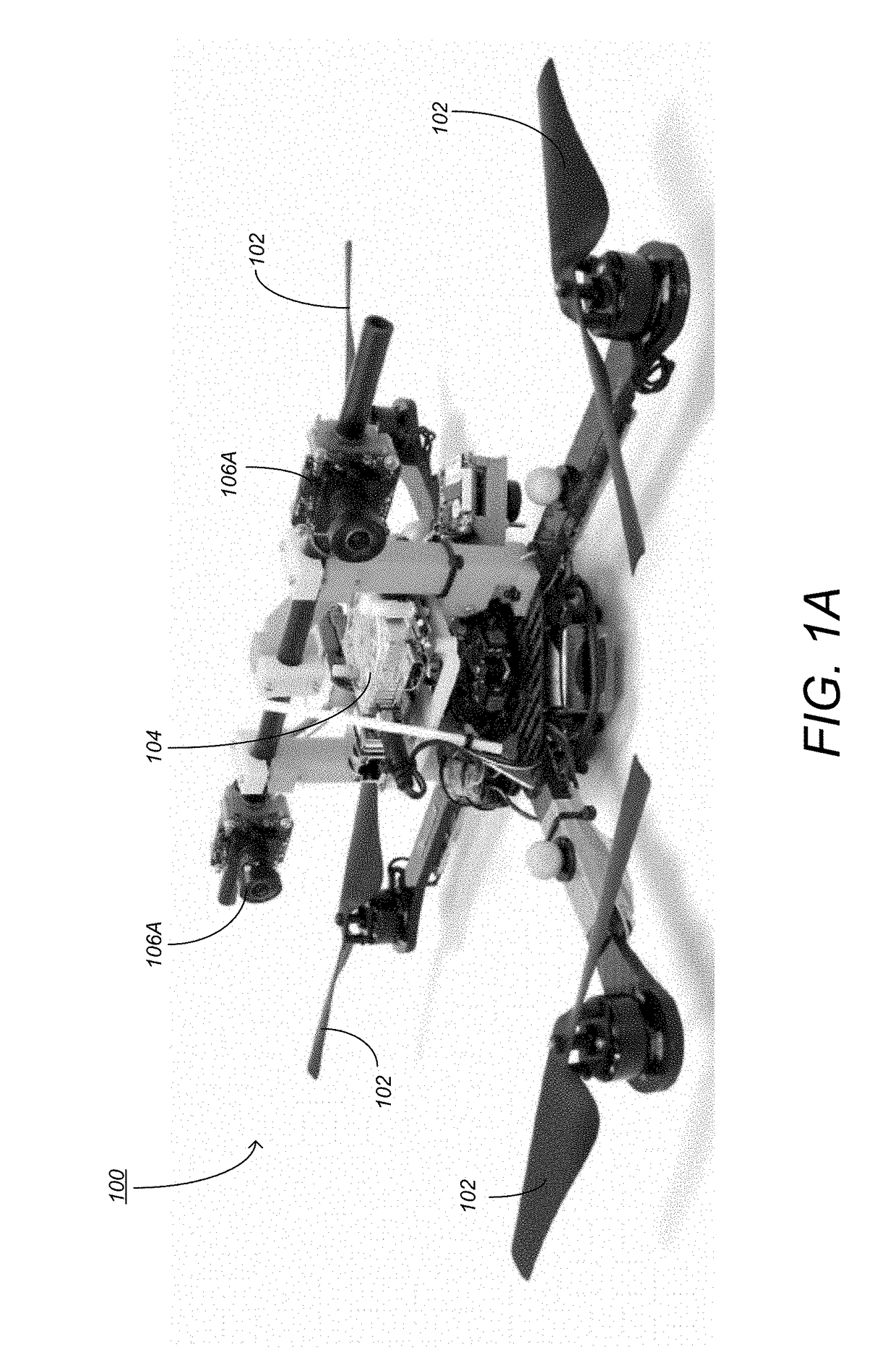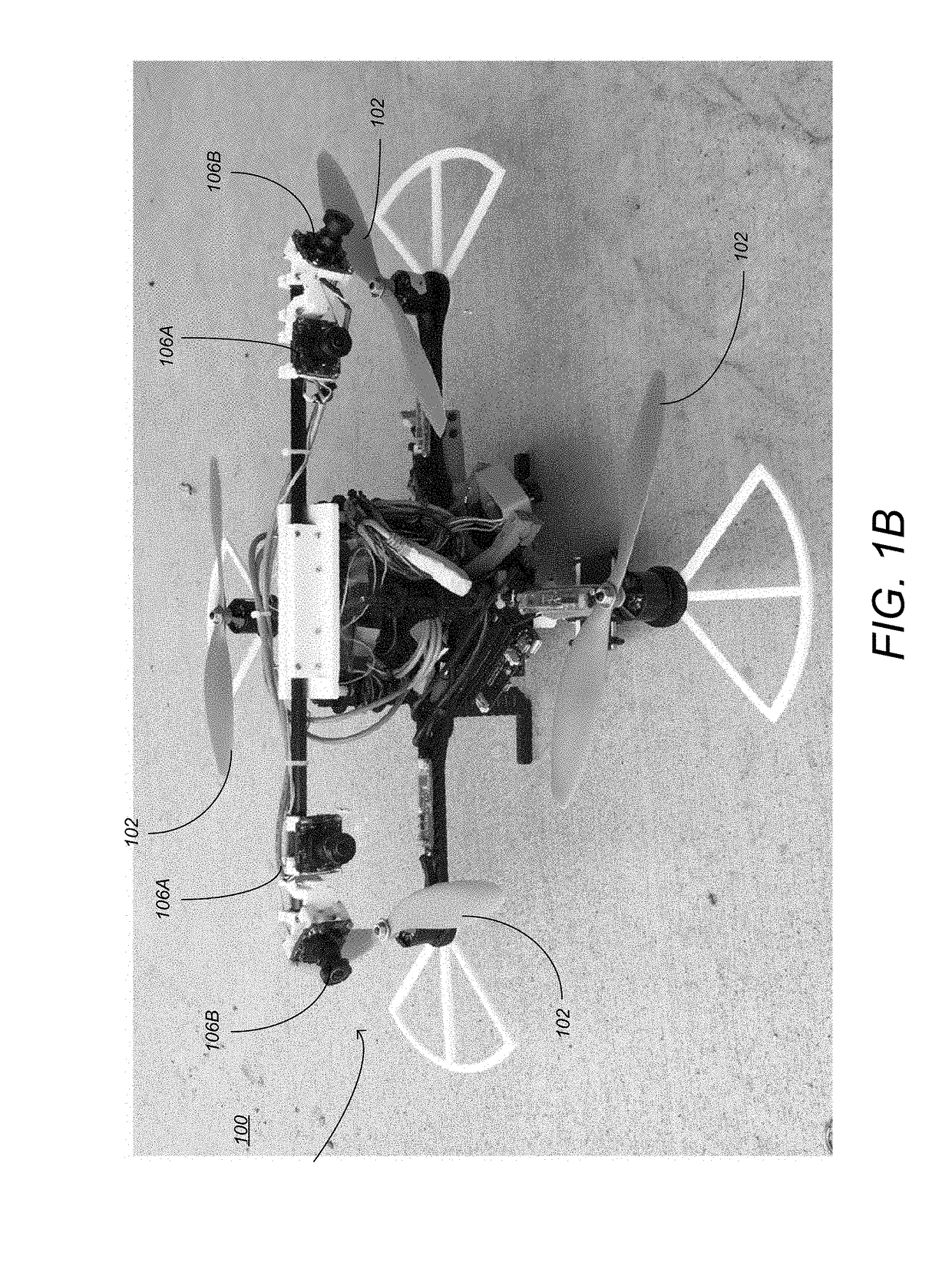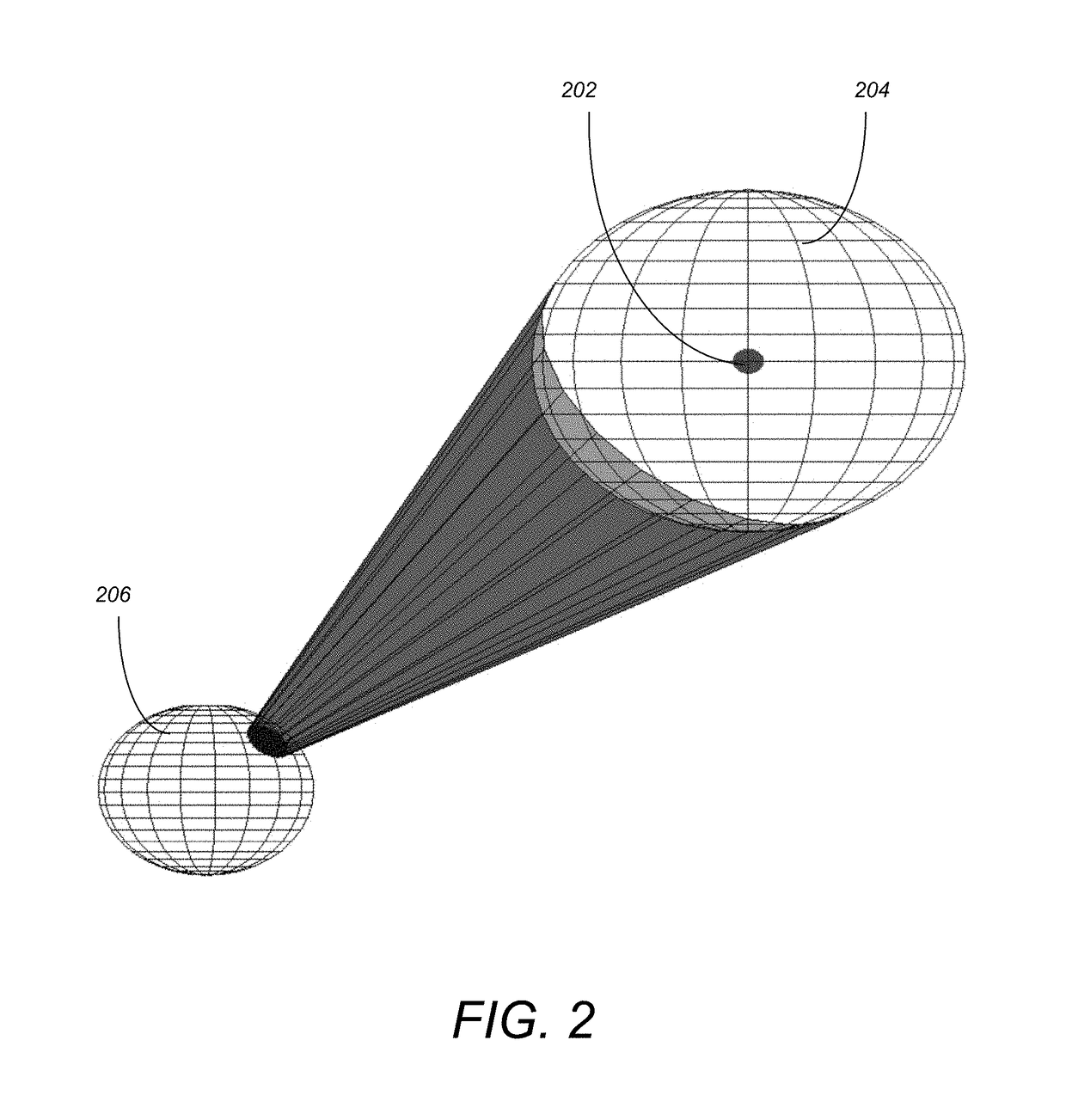Controlling unmanned aerial vehicles to avoid obstacle collision
a technology collision avoidance, applied in the field of unmanned aerial vehicles, can solve problems such as sensing and computational resources, and achieve the effects of reducing computational costs, simple and efficient, and accurate representation
- Summary
- Abstract
- Description
- Claims
- Application Information
AI Technical Summary
Benefits of technology
Problems solved by technology
Method used
Image
Examples
Embodiment Construction
[0026]In the following description, reference is made to the accompanying drawings which form a part hereof, and which is shown, by way of illustration, several embodiments of the present invention. It is understood that other embodiments may be utilized and structural changes may be made without departing from the scope of the present invention.
Overview
[0027]Embodiments of the invention provide a pipeline for avoiding obstacles at high speeds, using an arbitrary suite or range sensors, for robotic aircraft (“unmanned aerial vehicles”) that satisfy the “configuration flat” property (see below), including those of a small, portable size known as micro air vehicles (MAVs). Embodiments may be utilized in / by aircraft of the multirotor family, which include the widely available quadcopter platform (also referred to as a “quadrotor” or, colloquially, as a “drone”). Embodiments may be utilized in / by aircraft of the fixed-wing family, which includes airplane-like platforms. The ability to f...
PUM
 Login to View More
Login to View More Abstract
Description
Claims
Application Information
 Login to View More
Login to View More - R&D
- Intellectual Property
- Life Sciences
- Materials
- Tech Scout
- Unparalleled Data Quality
- Higher Quality Content
- 60% Fewer Hallucinations
Browse by: Latest US Patents, China's latest patents, Technical Efficacy Thesaurus, Application Domain, Technology Topic, Popular Technical Reports.
© 2025 PatSnap. All rights reserved.Legal|Privacy policy|Modern Slavery Act Transparency Statement|Sitemap|About US| Contact US: help@patsnap.com



